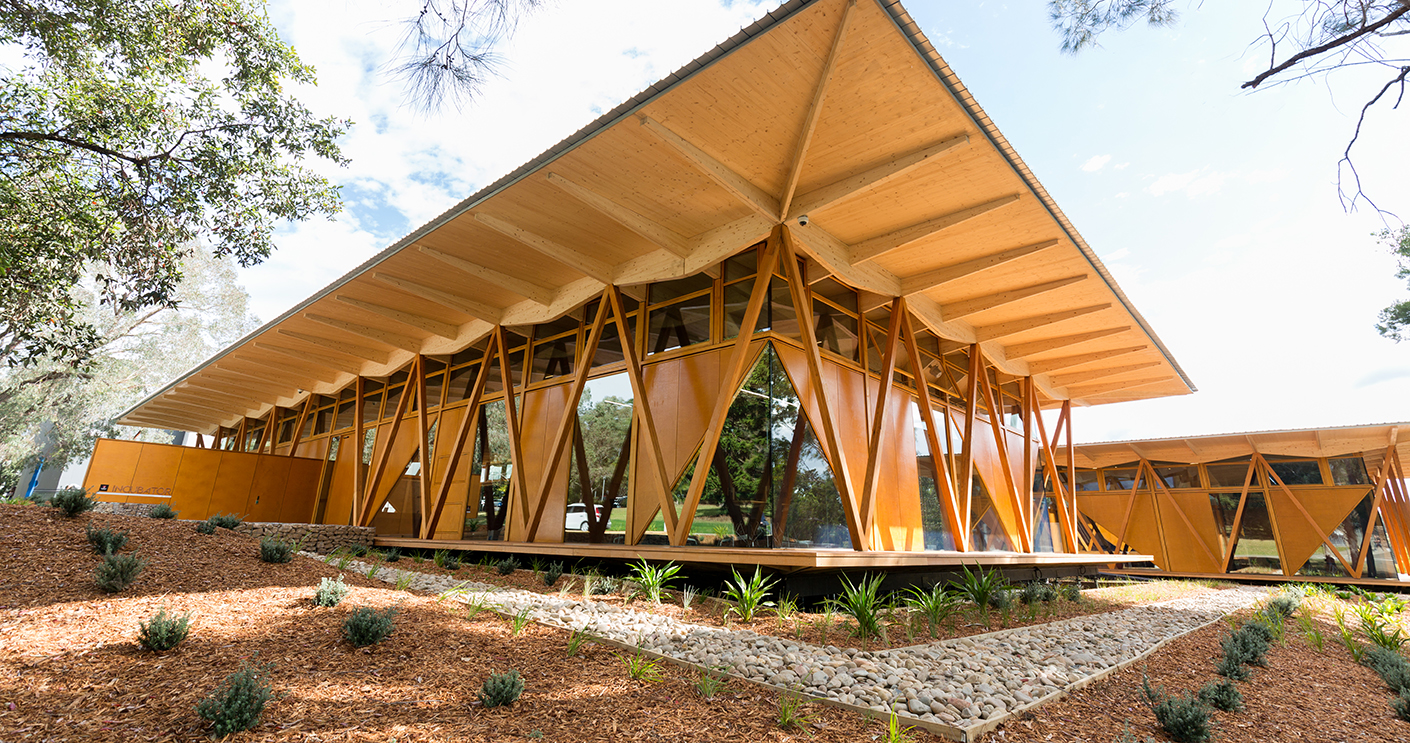In this excerpt from his book, Higher Education at the Crossroads of Disruption: The University of the 21st Century, Andreas Kaplan looks at how campus buildings add to a sense of community for students and staff – an important perspective as we prepare to return back to campus for a near-normal academic year.

Universities are about more than teaching material or awarding diplomas; fortunately, they’re about having memorable experiences, creating networks for life, sometimes even finding one’s significant other. University is about relationships and belonging to a community consisting of alumni, students, professors, staff, and beyond. While academic content can, to a certain degree, be commodified and early-life degrees might lose their value, relationships are much harder to replace. However, higher education institutions do not always behave like they’re in the relationship business, thereby rendering them vulnerable to disruption. Community [ranging from student societies to campus food, alumni etc.] is therefore the subject of this chapter. Real estate and physical plant will be discussed as a further path to strong community-building, while offering a broader outlook on the usefulness and importance of buildings for the university of the 21st century.
Buildings are a vital element to fostering strong community spirit. It would be wrongheaded to believe that owing to digitalisation, physical buildings are becoming obsolete. The financial temptation for a university’s administration to adopt such a line of thinking might be huge, but would be a mistake. With courses increasingly moving online, buildings might even be more important than before. So as Barry Manilow sings, “Let’s hang on…” to our buildings. In this new context, students will need to be attracted to campus, as the need to attend live courses decreases. Workspaces such as anti-cafés, for example, will become essential to fostering exchange among students, continuing education enrollees, alumni, and professors, thereby strengthening the aforementioned vital attachment of these stakeholders to their institution. Furthermore, physical buildings are necessary for innovative teaching, fostering multi- and interdisciplinarity, as well as serving as a communications and marketing vector.
With courses increasingly moving online, buildings might even be more important than before
Buildings build strong communities
Community-building is of utmost importance at the university of the 21st century, as by now everybody should understand, and buildings are needed to realise this goal. Yet instead of huge amphitheatres, higher education institutions should dedicate an increasing portion of their space to teamwork and collaboration, as well as encounters and exchanges between fellow students, between students and faculty … and why not alumni and the entire university community?
Space designs in the form of the anti-café will become standard to enable such vital community-building. Anti-cafés could be described as modern versions of coffeehouses, whose main purpose is not to encourage consumption, but rather to provide a workspace with the option of coffee or a snack. The French business school EM Lyon has an anti-café on campus where students, alumni, and school partners work in a collaborative environment that resembles more an airport lounge than a traditional café. To involve a university’s entire community, libraries, cafeterias, quads, or event spaces can be opened to the broader public, which might open up new revenue streams.
Buildings strengthen vital attachment
More particularly, buildings must strengthen vital attachment of students to their university. They accordingly need to enable a stimulating student life, host student societies and sports clubs, and foster a welcoming atmosphere. Only then will students (and professors for that matter) want to come to campus and in turn become strongly attached to their alma mater. Remember: with more courses being taught online, there are fewer direct reasons to be on site. Students attending classes from home might become attached to their living rooms rather than to their institution. Therefore, students will need to want to come and spend time on campus, necessitating the university to provide appealing, high-quality spaces featuring inviting interior design.
remote learning might actually thwart fostering a diverse student body, an issue demanding every university’s attention
Yet, there is a further reason why buildings are needed. Online teaching and learning, though often cited as democratising education, can also potentially increase social disparities. During the pandemic, it was brought home to us that not all students had laptops at their disposal, an issue that could be fixed by providing them with the necessary IT. However, it also became evident that not everybody has spacious living quarters, much less students, who overwhelmingly live in shared housing, making it difficult for them to focus on online classes. Thus, remote learning might actually thwart fostering a diverse student body, an issue demanding every university’s attention.
Buildings enable innovative teaching
The future of learning and teaching is about finding the right mix of online and on-site instruction. In general, offline pedagogy becomes more interactive in nature with an increasing variety of teaching and learning formats. Accordingly, classrooms and auditoriums need to be easily adjustable with respect to their layout: they need to be easily expandable, contractible, and alterable according to the instructional method used. Technology-enabled active learning (TEAL) demonstrates how such an evolution can be supported by physical spaces. The TEAL classroom at Yale University, for example, has room for more than 100 students sitting at 10 to 15 tables, each equipped with a flat screen, in addition to five large projection screens distributed around the room. This setting allows the instructor to switch between short lecture modules and hands-on group work, where the just-learned material can immediately be discussed.
 The flexible-use, environment-friendly, demountable incubator at Macquarie University, Sydney, Australia
The flexible-use, environment-friendly, demountable incubator at Macquarie University, Sydney, Australia
Moreover, universities are increasingly providing space for start-up incubators and accelerators, helping to inculcate an innovative, entrepreneurial spirit. These incubators often require a lot of physical space and are designed to enable students and alumni to work on their innovations, ideas, business models, and implementation. They also provide space where partnerships between the university and corporate partners can be fostered and developed.
Buildings foster multidisciplinary research
Alongside teaching, research can be facilitated via the setup of buildings and room structures. The necessity for conducting multi- and interdisciplinary research was previously made clear. Accordingly, closed offices and a lack of space to meet up and exchange with one’s peers will not foster collaboration between colleagues, let alone across disciplines and faculties.
More higher education institutions are establishing interdisciplinary research buildings, one of the most recent being the University of Texas, which built a 150,000-square-foot (about 14,000 square metres) facility at cost of $100 million. The building’s architecture is designed to enable researchers from various departments and faculties to share workspaces as well as laboratories. Instead of permanently assigning a space to one or several faculty members, the rooms is allocated on a short-to-longer-term basis upon request, thereby accommodating the specific needs of a given research team. To ensure that projects are mainly interdisciplinary in nature, a review team consisting of faculty members – another way of restoring faculty input – evaluates proposals toward the allocation of space.
Buildings market the institution
A final way of making good use of physical buildings is their capacity as marketing collateral. There are reasons why prospective students take campus tours: they want to feel the school’s atmosphere and vibe. Buildings market a place and help to attract the best students, professors, and support staff. Take Clemson University’s Watt Family Innovation Center, which showcases the South Carolina institution as being highly attuned to new technologies. Watt features approximately 200 touch screens that students activate by swiping their student cards; a 10-metre-high interactive video wall at the structure’s centre; and additional space where faculty can test out the latest educational technologies and tools.
 The undulating slopes and terraces that is the Rolex Learning Center, EPFL
The undulating slopes and terraces that is the Rolex Learning Center, EPFL
Some universities go even further in using buildings’ marketing potential. The École Polytechnique Fèdèrale de Lausanne, a Swiss university specializing in natural sciences and engineering, opted for its conference, library, and study centre to resemble an oversized Swiss cheese, with floors that rise up internal hills and dip down into valleys, so that even the space yodels. And recalling walking the walk with respect to sustainability and real estate, buildings are a further marketing vector for the university of the 21st century.
____________________________________________________________________________________________
This post is opinion-based and does not reflect the views of the London School of Economics and Political Science or any of its constituent departments and divisions.
___________________________________________________________________________________________
This excerpt from `Chapter 5 – Buildings, Bonds, and Babies: We Are Family’ from Higher Education at the Crossroads of Disruption: The University of the 21st Century has been reproduced with kind permission from the author, Andreas Kaplan, and the publisher, Emerald Publishing.
Rolex Learning Center, EPFL: main image, second image
Macquarie University Incubator: Macquarie University




